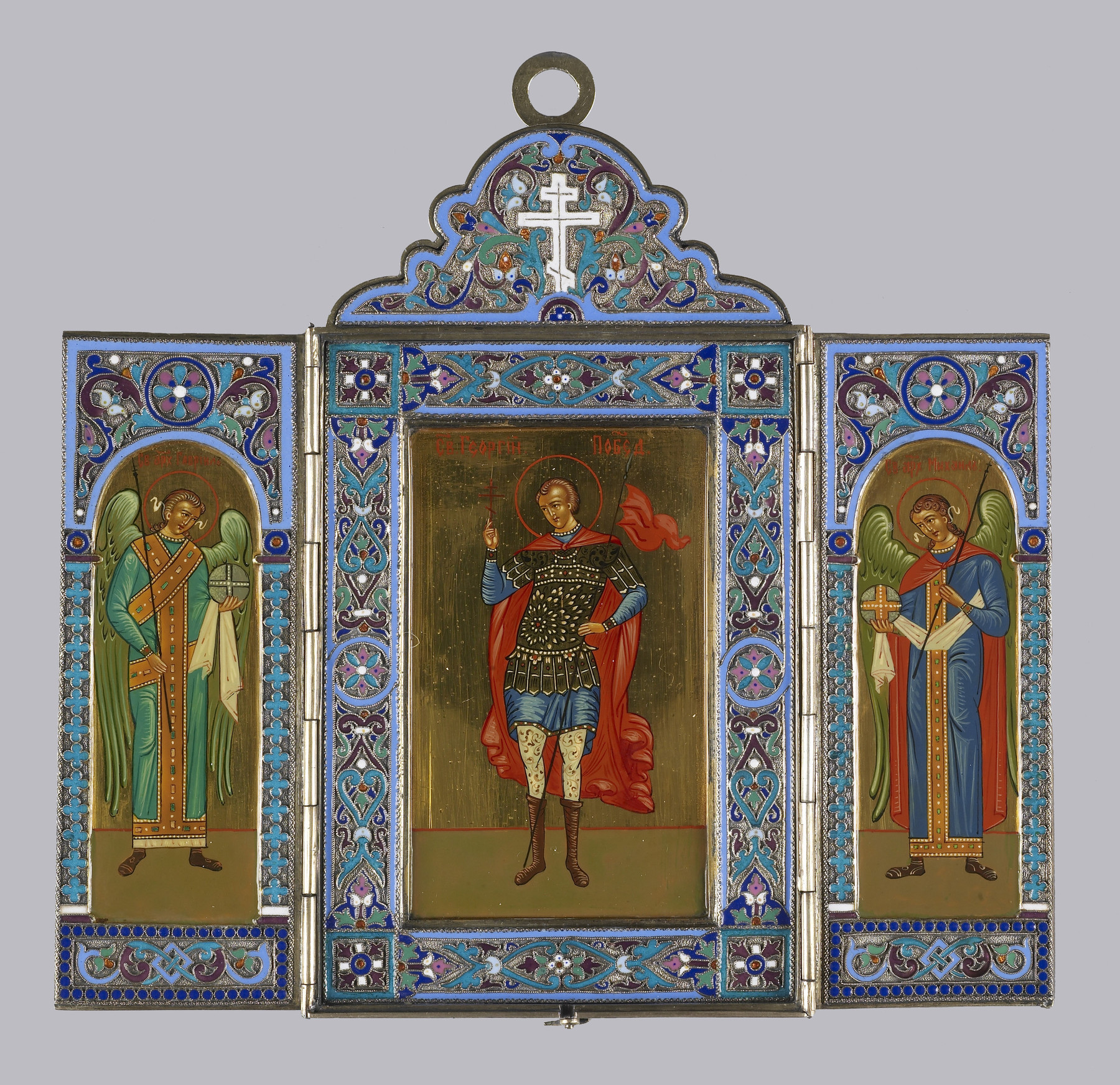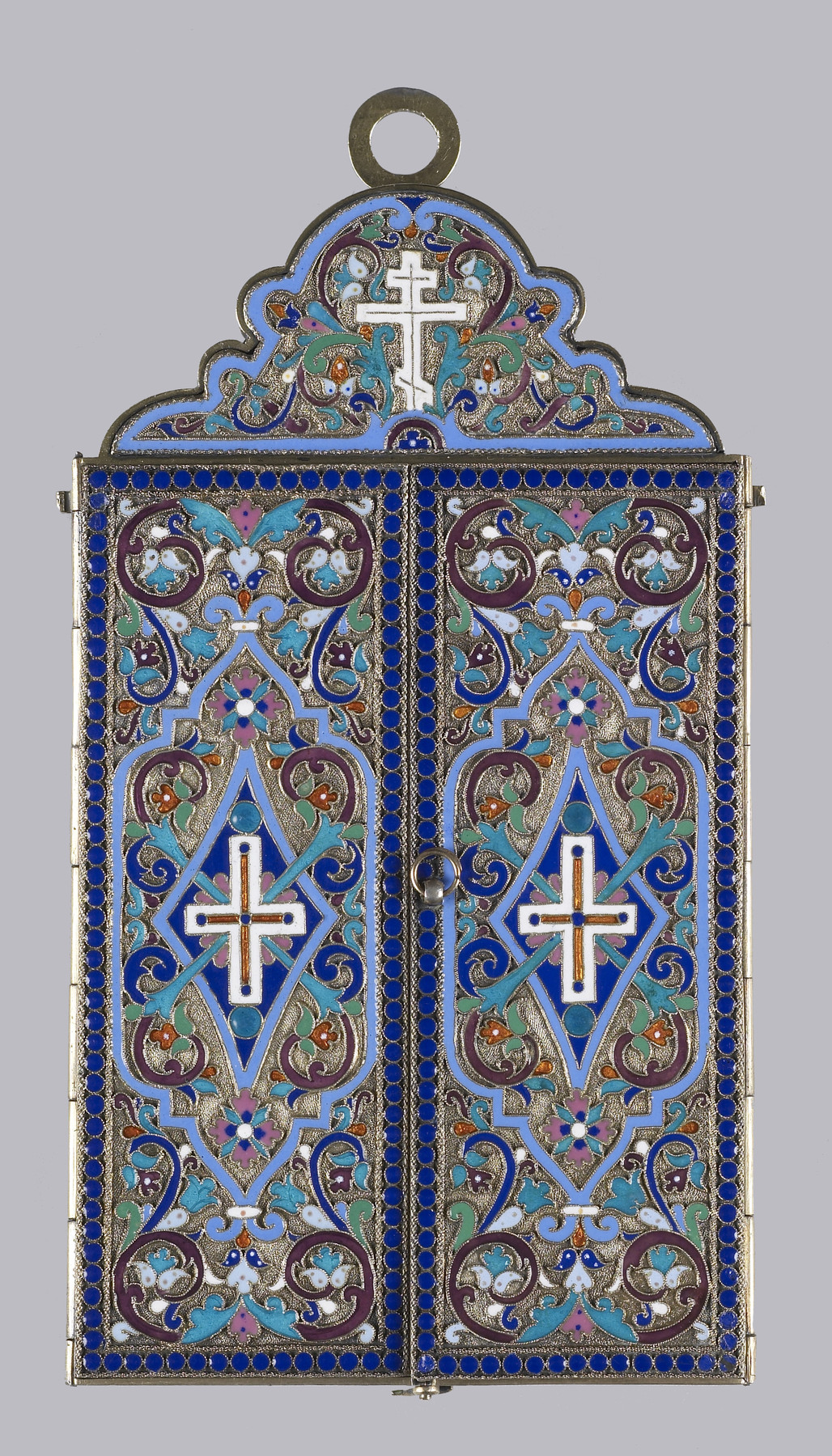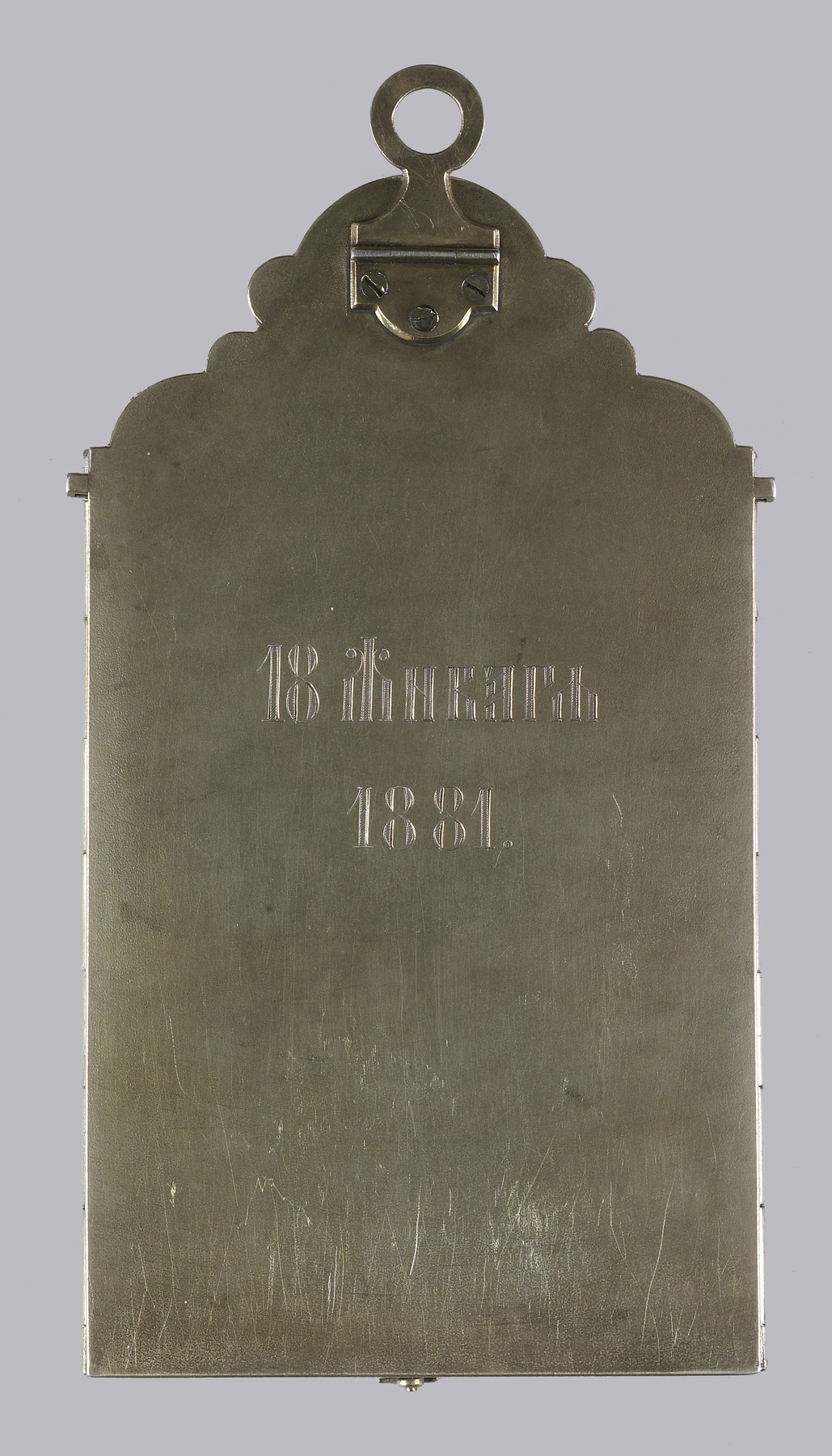Triptych with Saint and Angels
(18th and 19th Centuries )
The exterior of the triptych is executed in raised filigree enamel over a stippled ground with vine and interlace patterns in violet, purple, bright blue, and green. Each of the lateral panels bears a cross in white and foil-backed orange. Three-barred crosses appear both on the outside and the inside of the central, kokoshnik-shaped top section.
Set in the triptych's interior are three silver-gilt panels painted in glossy enamel directly on the metal with images of St. George the Victorious, and the Archangels Gabriel and Michael, all as warrior saints. They are identified by inscriptions: Sv. Arkh. Gabrial; Sv. Georgiy –Pobed. Sv. arkh. Mikhail'. The style of the painting, with the elongated figures, recalls, on one hand, seventeenth-century Stroganov icons, and, on the other, those produced more recently in Palekh and Mstera, two towns now associated with lacquer work. The frames are bordered in panels of raised interlace and leaves in the same colors as the triptych's exterior.
Inscription
Provenance
Provenance (from the French provenir, 'to come from/forth') is the chronology of the ownership, custody, or location of a historical object. Learn more about provenance at the Walters.
A la Vieille Russie, New York; purchased by Jean M. Riddell, Washington, D.C., December 15 1972; by bequest to Walters Art Museum, 2010.
Exhibitions
| 2017-2018 | Fabergé and the Russian Crafts Tradition: An Empire's Legacy . The Walters Art Museum, Baltimore. |
Geographies
Russia, Moscow (Place of Origin)
Measurements
H: 6 1/4 × W closed: 3 1/2 × D: 9/16 in. (15.8 × 8.9 × 1.5 cm); W with panels open: 6 7/8 in. (17.5 cm)
Credit Line
Bequest of Mrs. Jean M. Riddell, 2010
Location in Museum
Not on view
Accession Number
In libraries, galleries, museums, and archives, an accession number is a unique identifier assigned to each object in the collection.
In libraries, galleries, museums, and archives, an accession number is a unique identifier assigned to each object in the collection.
44.791








